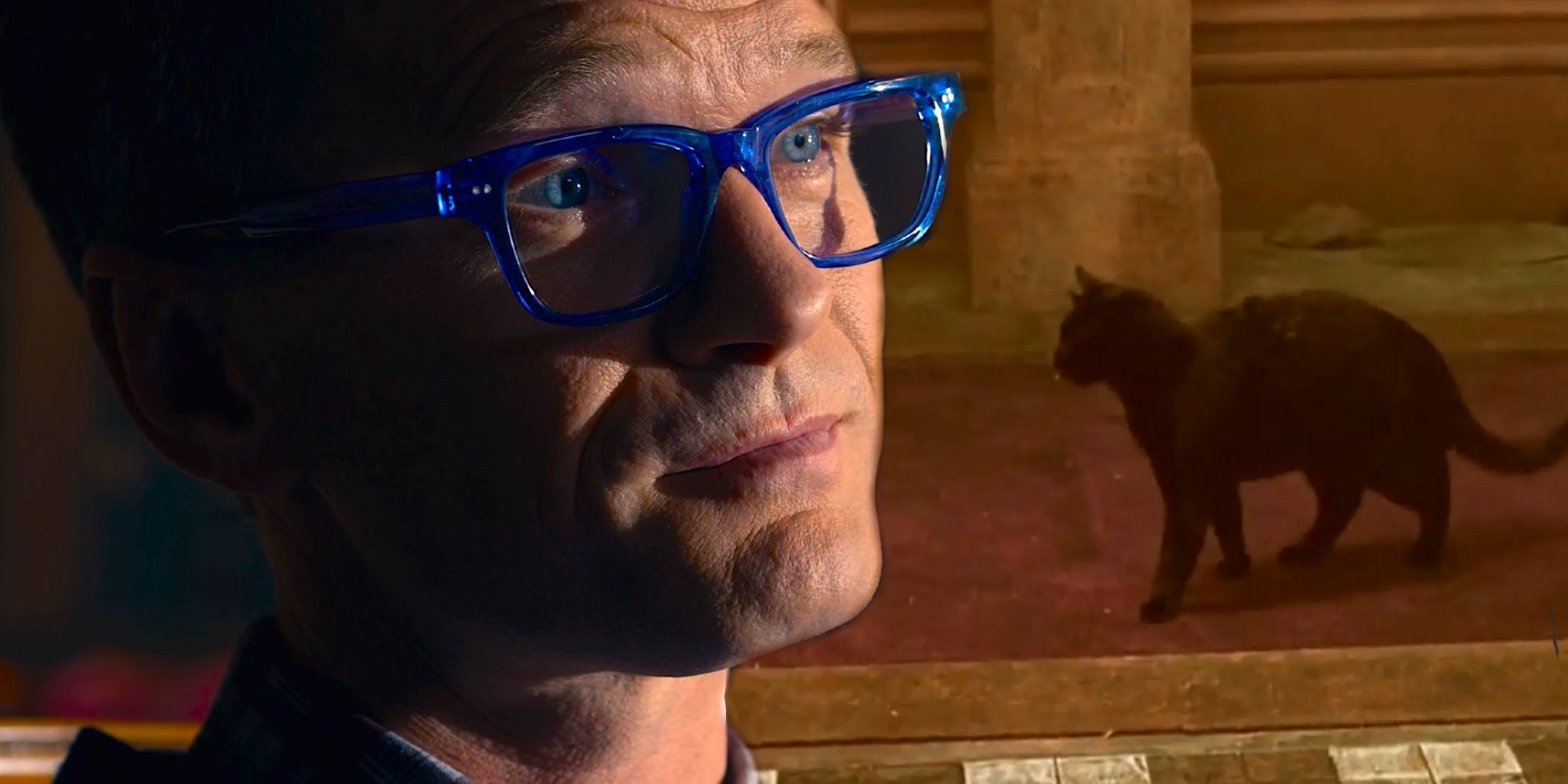Deja Vu Cat: What Powers Did It Give The Matrix's Analyst?

Warning: Contains SPOILERS for The Matrix Resurrections.
The iconic "Deja Vu Cat" from The Matrix returns in The Matrix Resurrections, but what powers did it give the Analyst? First seen in 1999 through Neo's (Keanu Reeves) eyes, The Matrix franchise audiences have come to understand that the Deja Vu Cat acts as a signifier that the Matrix's code has changed in some way. While the cat's first appearance in The Matrix reveals Agents have laid a trap for Morpheus (Laurence Fishburne) and his team, the Deja Vu Cat's appearances in The Matrix Resurrections represent something else entirely.
Neil Patrick Harris' Analyst is first introduced in The Matrix Resurrections as Thomas/Neo's therapist, prescribing blue pills to keep him sedated. During their therapy sessions, the Analysts' cat gives Neo a sense of deja vu, although he cannot recall where he knows the animal from. In subsequent scenes featuring the Analyst, the same black cat can be seen in close proximity to the upgraded version of the Architect, hinting at the pair's connection. Subsequently, in The Matrix Resurrection's penultimate fight scene, the Analyst desperately reaches out to the Deja Vu Cat as he loses control of the situation - although he cannot coerce the cat into his arms.
Put simply, the black cat seen in The Matrix Resurrections represents a utility tool used by Matrix administrators like the Analyst to reset or modify areas within the system. The Deja Vu Cat represents a program the Analyst has built and keeps constantly running by his side as a failsafe should he need to make quick adjustments to the Matrix. While black cats were simply the signifiers of change in the original Matrix trilogy, the Architect has used their image as the face of a near-omnipotent program that allows him to change the Matrix system at will. Furthermore, the Analyst's black cat also represents the embodiment of deja vu within the Matrix, which he uses to keep dangerous entities such as Neo in closed loops while plugged into the system.

While Thomas Anderson/Neo is receiving his therapy sessions with the Analyst, the sound of the bell around the Deja Vu Cat's collar always jingles as he enters the therapy room. Neo hears this sound each time he meets the Analyst (before he reveals his true self), hinting that each therapy meeting and appearance of the cat represents a reset of Neo/Thomas' mind and memories within the simulation. By keeping Thomas/Neo in a loop quite literally built from the feeling of deja vu, the Analyst can keep Neo in a closed loop of events that prevent him from waking up and realizing who he is.
However, apart from repurposing the Deja Vu Cat as a method of control, many of the Analyst's powers seem also to be derived from the cat - which is actually a program built by the Analyst in The Matrix 4. The cat allows the Analyst to change the makeup of the Matrix itself, as evidenced by his command of the swarm-bots, which he can only activate after he is holding the Deja Vu Cat. The cat's potency is cemented by The Matrix Resurrections' final scene, in which Neo holds the cat while lecturing the Analyst before putting the animal down and flying away after stating he and Trinity will "re-build the Matrix." While the black cat from The Matrix heralded a sudden change in the Matrix's code, The Matrix Resurrections' Deja Vu Cat builds on this program idea and turns a simple creature into a physical representation of the Analyst's powers within the system.
Source: Screenrant
Post a Comment